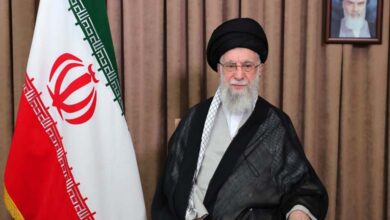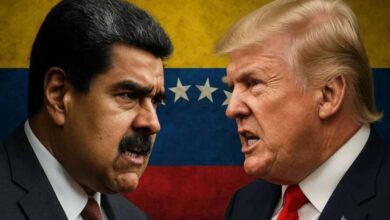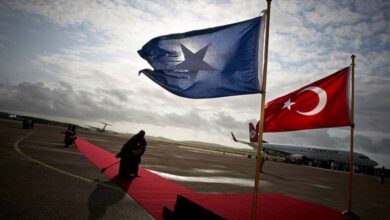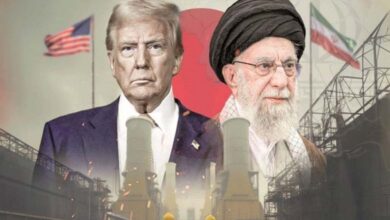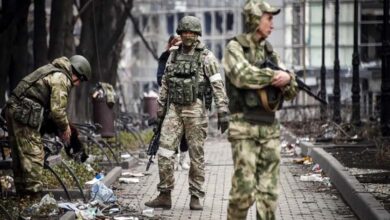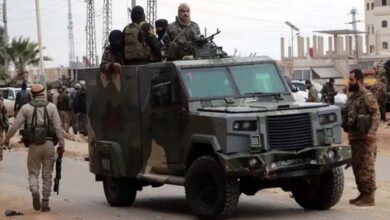The Muslim Brotherhood disowns ‘Hasm’ after training video uproar: Political maneuver or plea for reconciliation?
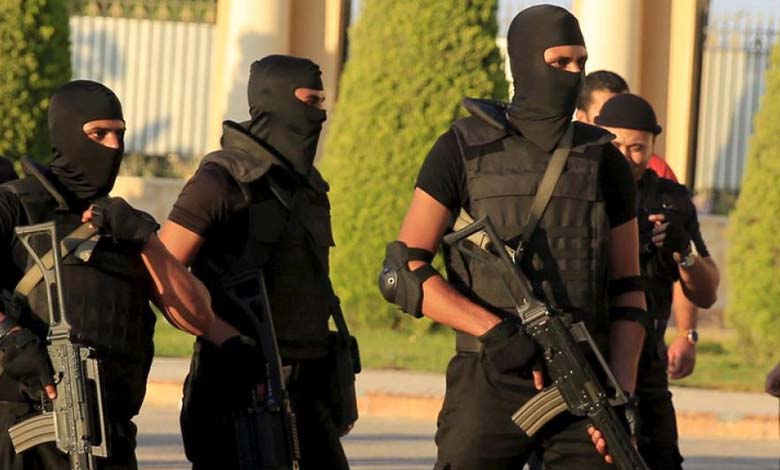
Following the uproar over a video released by the Egyptian militant group Hasm, in which it threatened to carry out terrorist attacks in Egypt, the Muslim Brotherhood—designated a terrorist organization in several countries—issued a statement distancing itself from the group.
-
Old Video Resurfacing Exposes the Falsehood of Hasm’s Threats
-
Hasm Resurfaces: Training Video Raises Fears of New Threat to Egypt
Mahmoud Hussein, acting General Guide of the Istanbul-based faction, claimed there is no connection between the Brotherhood and Hasm, reaffirming the group’s support for strengthening state institutions, particularly the military, to face regional challenges.
The statement, also circulated internally, departed from the Brotherhood’s usual rhetoric. It featured unusual vocabulary such as “supporting the military” and “preserving state institutions,” which analysts view as a calculated attempt to show moderation and mislead Egyptian authorities into believing the group is no longer hostile.
-
Muslim Brotherhood’s Hasm: A Leap into the Void Amid Fragile Regional Conditions
-
The “Hasm” movement of the Muslim Brotherhood aimed to overthrow the ruling regime in Egypt… How?
This distancing came in response to a call by Ayman Nour, head of the Ghad El-Thawra party and a Brotherhood ally, urging the group to denounce Hasm’s threats. However, the rival “London faction” of the Brotherhood remained silent.
Conversely, the group’s “General Bureau” faction—associated with militant offshoots—praised the Hasm video. Figures such as Yahya Moussa, convicted in Egypt for organizing armed attacks, described the video as proof that the armed struggle is not over.
-
New Document Reveals Muslim Brotherhood’s Attempts to Attract Hasm Movement for Internal Election Planning
-
The New “Khot Al-Saeed”… A “Suspicious” Connection to the Muslim Brotherhood
Legitimizing violence
This statement is viewed by many as a familiar Brotherhood tactic to clean up its image. Yet historical evidence shows the Brotherhood originally founded and backed militant groups like Hasm, especially after being ousted from power in 2013.
In February 2014, the Brotherhood’s General Shura Council held a secret meeting to discuss strategy against the state, which resulted in the “Exhaustion, Disruption, and Decisive Action Plan”—explicitly endorsing the use of violence to overthrow the Egyptian regime.
-
The Muslim Brotherhood and June 30: A Divided Diaspora and a Movement in Clinical Death
-
Experts Reveal the Muslim Brotherhood’s History of Violence and Terrorism in the Arab Region – Details
The group sought religious justification through a committee led by Magdy Shalash, which published a study titled “Jurisprudence of Popular Resistance Against the Coup,” effectively sanctioning attacks on state officials, civilians, and infrastructure.
An entity called the “Bureau of Revolutionary Action” was then formed under Mohamed Kamal’s leadership, with approval from Mahmoud Ezzat. This bureau oversaw the creation of several armed factions that launched attacks on security forces, electricity grids, and government buildings.
-
Anniversary of January 25: How 14 Years of Divisions Have Disrupted the Mind of the Muslim Brotherhood
-
Warnings about Suspicious Moves to Recycle Extremist Organizations: What’s the Story?
One major attack occurred in 2015 when they bombed power lines supplying Egypt’s Media Production City, disrupting television broadcasts.
Although the Brotherhood’s violent campaign ultimately failed—many leaders were arrested, and plots foiled—the group continued its activities. The assassination of Egypt’s Prosecutor General Hisham Barakat and the official launch of Hasm and Lewaa Al-Thawra marked a new wave of terrorism.
-
With the support of foreign intelligence agencies, the Muslim Brotherhood exploits events in Syria to promote their rumors
-
Amid Regional Escalation: Experts Warn of the Return of Armed Groups and Political Islam Movements
Post-failure maneuvering
With Hasm reappearing in recent days, Mahmoud Hussein’s statement is seen by analysts as another Brotherhood maneuver.
Expert Ahmed Ban believes Hussein is trying to present his faction as peaceful and reformist to reestablish dialogue with the Egyptian state, positioning himself as heir to the “moderate” leadership style of Mahmoud Ezzat and distancing himself from the violent line of Mohamed Kamal.
-
Why Did the Muslim Brotherhood Reject the Document on Combating Violence Against Women?
-
Media Recalls the Crimes of the Muslim Brotherhood and Their Attempt to “Burn Egypt”
Sabra Al-Qasimi, a human rights lawyer and political Islam researcher, sees the statement and Hasm video as part of a broader strategy to divide roles: militant pressure from Hasm, and conciliatory rhetoric from Hussein, in an attempt to regain political space.
He stressed that the video serves as a direct threat to Egypt, signaling that armed groups are ready to resume violent activity, in a last-ditch effort to pressure the state into concessions.
Despite these efforts, the Egyptian public has widely rejected the Brotherhood, and there appears to be little chance for its return to political life anytime soon.


